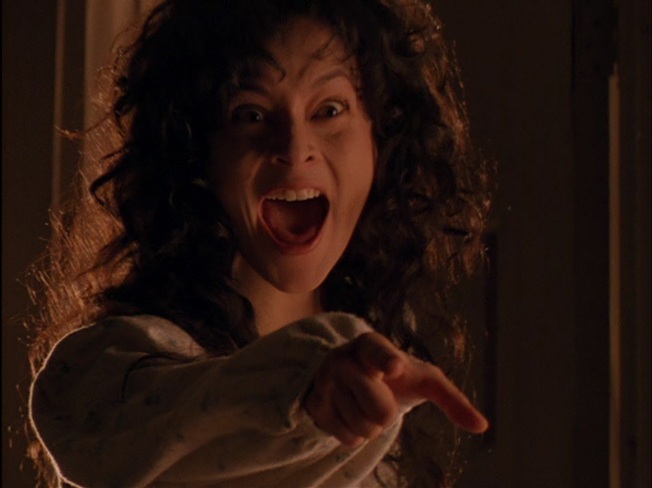
by Jeffery X Martin
It’s a story as old as time. Well, at least 1955.
When Jack Finney’s novel, Invasion of the Body Snatchers, was serialized in Collier’s Magazine that year, the public really didn’t give a shit. Critics panned it for being simplistic and poorly paced. The first film version, however?
That’s a different story.
Don Siegel’s 1958 sci-fi classic turned Finney’s run-of-the-mill alien invasion tale into a chilling Cold War cautionary tale. Alien creatures invade the sleepy town of Santa Mira, CA. They’re plants, and they have arrived on our planet in containers that resemble giant milkweed pods. As you probably already know, they get you while you sleep. The person that you are, your personality, your hopes and dreams, your fears, are all erased. You are replaced by a blank emotionless copy of yourself, bland on two legs.

Siegel’s movie was about Communism, the Red Threat. Anyone could be indoctrinated by the horrible Marxist manifesto. Your neighbors, your wife, your children, anyone could be leading a secret life as a Russian informant. As Kevin Conroy screams at the camera in one of the greatest fourth-wall breaks ever filmed, “It’s too late! They’re already here!”
Twenty years later, Philip Kaufman remade the film, focusing more on the science-fiction aspects of the story. There’s not much allegory to be found, just aliens who want to take over our planet, suck its resources dry and move on to the next world.
Both of those movies were massive hits, though, and they still resonate in the subconscious of our culture. They give us a reason for our paranoia. They give us something to hold on when people change dramatically. Uncle Tom quit drinking; he must be a pod person.
With the obvious impact the story has on us, as a people, why doesn’t anyone talk about the incredible 1993 version, simply called Body Snatchers?
It has a horror pedigree that’s hard to beat. A script by schlocklord Larry Cohen (It’s Alive, Q: The Winged Serpent) and the team of Stuart Gordon and Dennis Paoli (Re-Animator). It’s produced by Robert H. Solo, who produced the 1978 remake. The director is none other than Abel Ferrara, who has been polarizing audiences since 1977 with movies like The Driller Killer, Ms. 45 and Bad Lieutenant.
If you’re a horror movie fan, don’t you already want to watch this?
Oh, yes, Body Snatchers is definitely a horror film. The pre-requisite science-fiction elements are thrown in, for the sake of brand recognition, but this is a creepshow, through and through.
This iteration takes place on a military base. Already an institution that isolates its people and their families, and demands blind obedience and conformity, it’s hard to tell when someone is being a good soldier, or if they’ve become a pod person. It’s not as heavy-handed of an allegory as it might have been, but Ferrara handles the whole thing with an eye towards subtlety. That’s rare for Ferarra.
The aliens also target the artists. One of the most terrifying scenes involves a daycare class in which all the kids paint the exact same picture with their fingerpaints, except for one little kid. He looks up his picture, his face questioning. What’s wrong with my picture? he thinks. What’s wrong with me?
The aliens hate creativity, they fear it, and seek to quash it out. “It’s the race that’s important,” one of the creatures says. “Not the individual.”
We don’t spend a lot of time these days worrying about the Red Threat. People are slowly forgetting what it was like to grow up with the realization that they could die at any second via nuclear missile attack.
But art is still censored. Record albums come with warning labels and hard liquor doesn’t. There is still a process of weeding out being done. The brave ones who refuse to sell out have gone underground. Society has become so afraid of what it is that as recently as 2007, the US Government paid $8000 for a cloth to cover up the Spirit of Justice statue in the Great Hall of the Justice Department in Washington, D.C.. She had a breast hanging out. Can’t have that, children! Can’t be showing parts of the body, even though we all have bodies! Don’t let the women see something they already possess!

I’m preaching now, but hopefully to the choir.
But maybe that’s why people don’t talk about Body Snatchers anymore. It’s the hard truth wrapped in a gooey horror coating. Even today, over twenty years later, Ferrara’s version of the story serves two purposes.
It’s either a highly effective retelling of a story you’ve grown up with, or it’s a mirror and it’s too late. You’re already here.
Did they get you while you slept?




